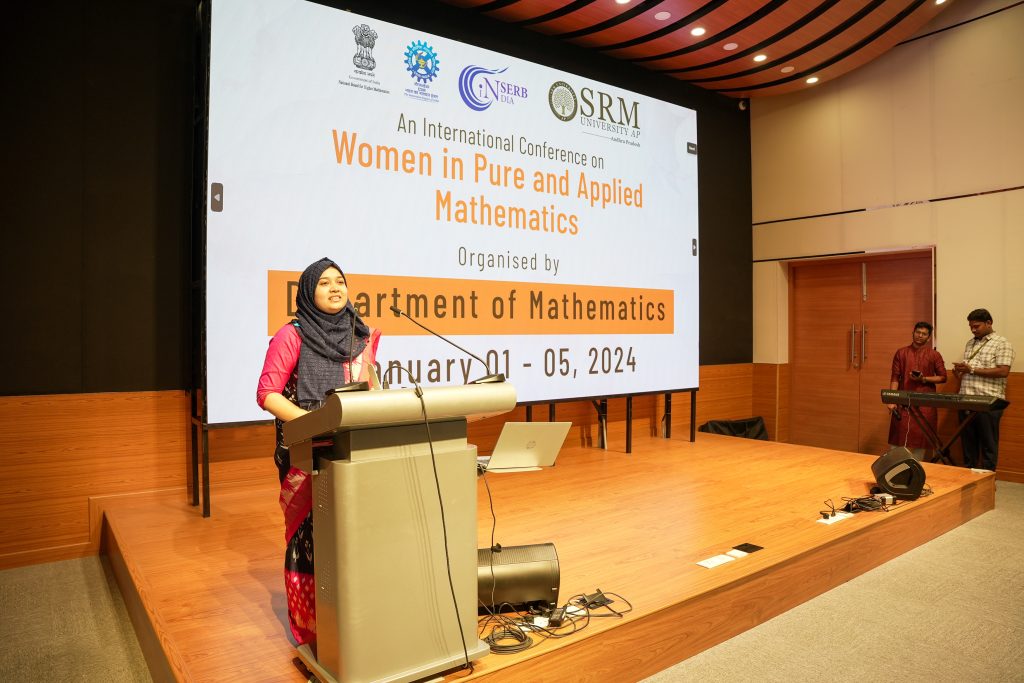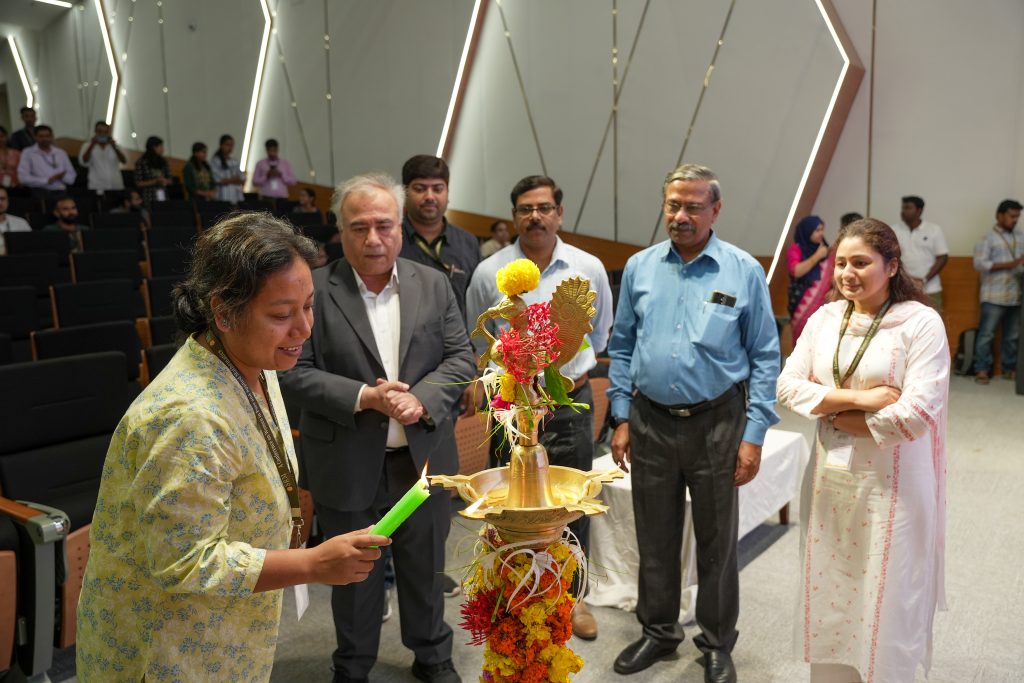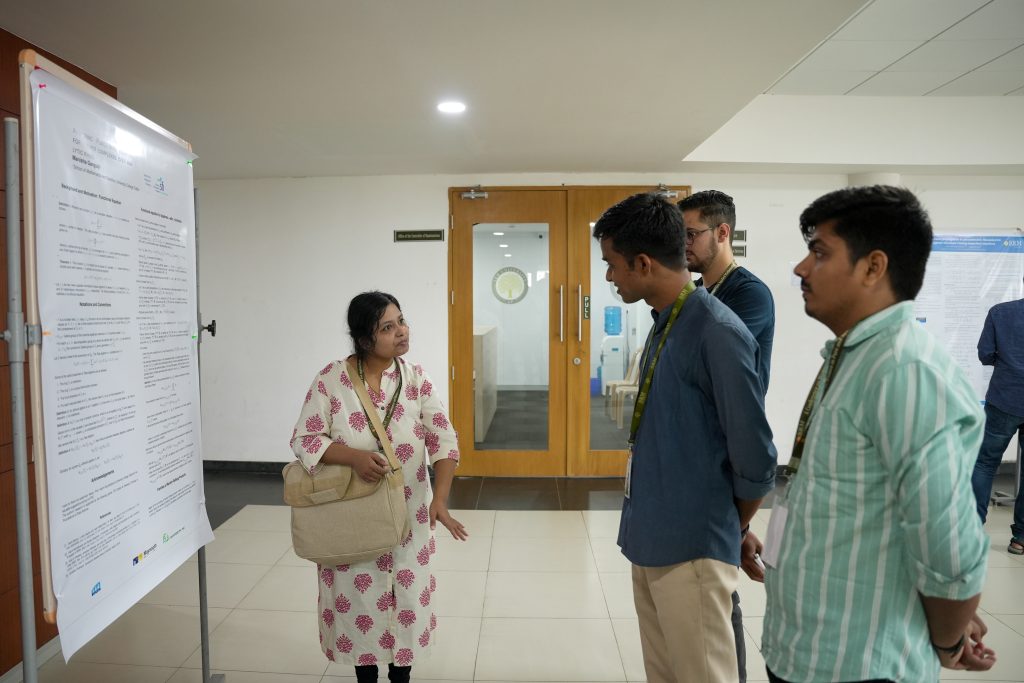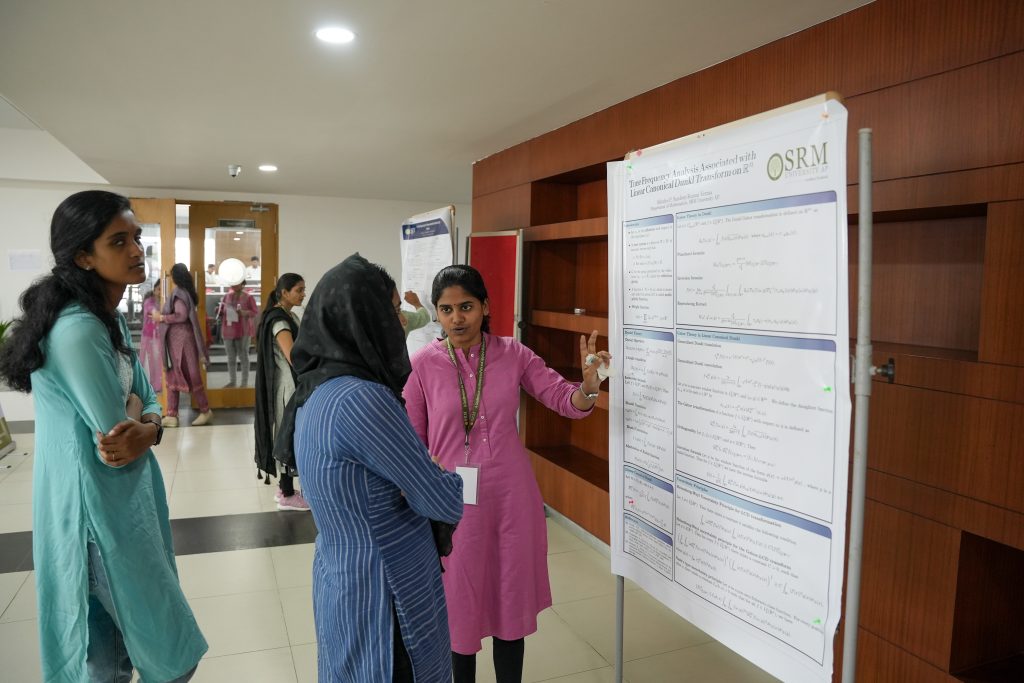SRM AP and TITAN COMPANY LIMITED Jointly Filed an Industrial Patent
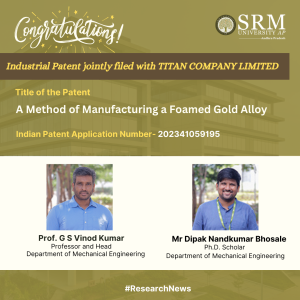 SRM University-AP and TITAN COMPANY LIMITED, a leading jewellery brand in India, have collaborated to engineer novel jewellery products using advanced materials and technologies. The joint research project, led by HOD Prof. G S Vinod Kumar and Ph.D. Scholar Dipak Nandkumar Bhosale, Department of Mechanical Engineering, has resulted in a new method of manufacturing foamed gold alloy that is lighter, stronger, and more durable than conventional gold jewellery.
SRM University-AP and TITAN COMPANY LIMITED, a leading jewellery brand in India, have collaborated to engineer novel jewellery products using advanced materials and technologies. The joint research project, led by HOD Prof. G S Vinod Kumar and Ph.D. Scholar Dipak Nandkumar Bhosale, Department of Mechanical Engineering, has resulted in a new method of manufacturing foamed gold alloy that is lighter, stronger, and more durable than conventional gold jewellery.
A joint patent between SRM University-AP and TITAN COMPANY LIMITED has been filed for this innovative method of manufacturing foamed gold alloys. The jewellery products made from this material are currently available in TITAN showrooms under the brand name TANISHQ. The customers can enjoy the benefits of wearing lightweight and high-strength jewellery, which also has a high aesthetic appeal and value.
The collaboration between SRM University-AP and TITAN COMPANY LIMITED exemplifies how academia and industry can work together to create novel and useful products for society. The joint research project also provides an opportunity for the students and faculty of SRM University-AP to gain exposure and experience in the field of jewellery engineering and design and to contribute to advancing science and technology.
Abstract
The current innovation introduces a method for producing foamed gold alloy utilising a liquid metallurgical approach. Gas-releasing agents such as hydrides and carbonates are employed in the manufacturing process. Both 18K and 22K alloys are subjected to foaming in this invention. The resulting foams are stabilised by oxides generated in-situ as well as oxides added externally. These foamed gold alloys exhibit ultra-lower density. The foaming process is successfully executed using both interrupted and uninterrupted methods. These foamed gold alloys find applications in various fields including Jewellery and medical implants.
The title of patent in the citation format
“G. S. Vinod Kumar, Dipak Nandkumar Bhosale. A METHOD OF MANUFACTURING A FOAMED GOLD ALLOY. Indian Patent application number 202341059195 filed Sep 04, 2023”
Patent Application number
202341059195
Inventors
1. G. S. Vinod Kumar 2. Dipak Nandkumar Bhosale
- Published in Departmental News, Mechanical Engineering NEWS, News, Research News
Invited as Chief Guest at Tech Symposium
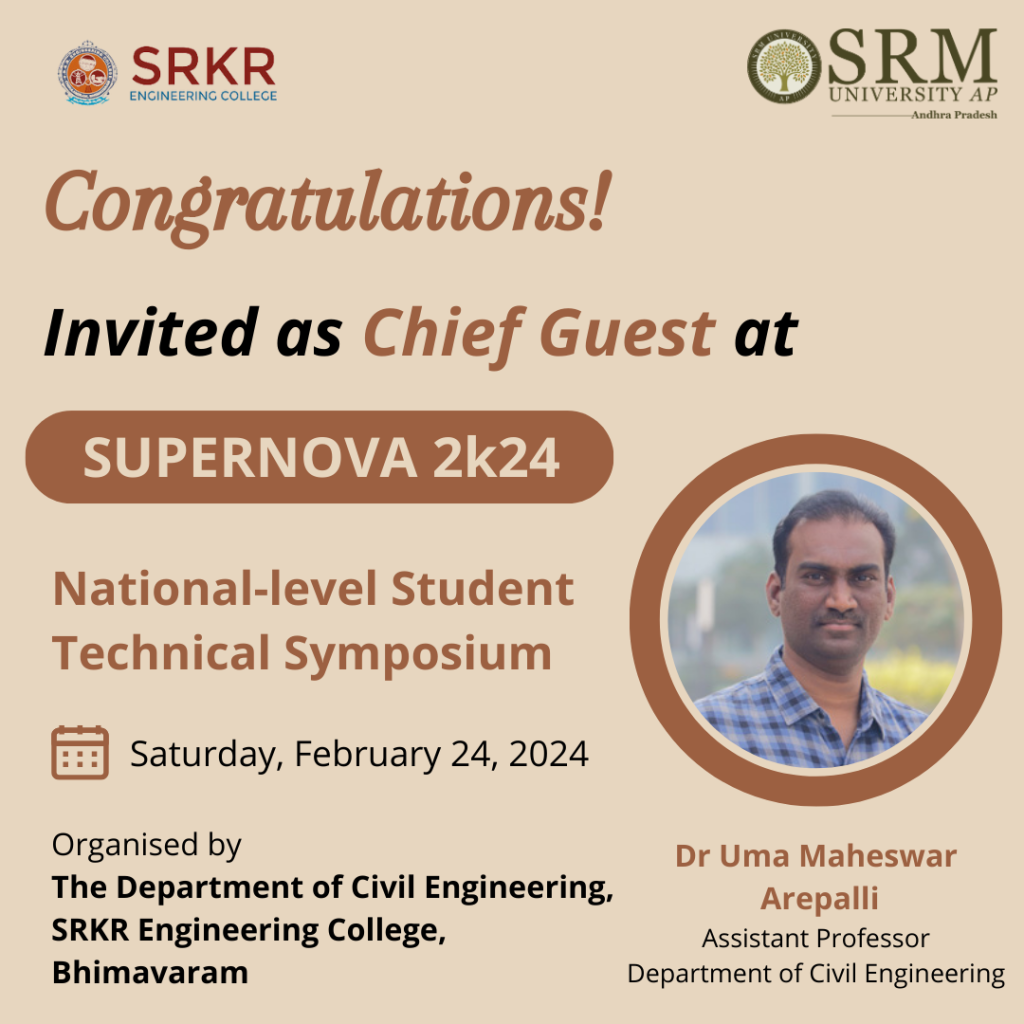
Dr Uma Maheswar Arepalli, Assistant Professor in the Department of Civil Engineering, has been invited as the esteemed Chief Guest at SUPERNOVA-2k24, a prestigious National Level Student Technical Symposium organised by SRKR Engineering College, Bhimavaram on February 24, 2024.
This is a well-deserved feather in the cap for Dr Arepalli, whose expertise in the field of civil engineering knows no bounds. Dr Arepalli will also deliver an expert lecture inspiring enthusiastic students to become young engineers!
Here’s to many more accolades coming your way, Dr Arepalli! From shaping young minds to pushing the boundaries of innovation, he’s a true trailblazer!
- Published in CIVIL NEWS, Departmental News, News
Celebrating Women’s Achievements in Pure and Applied Mathematics
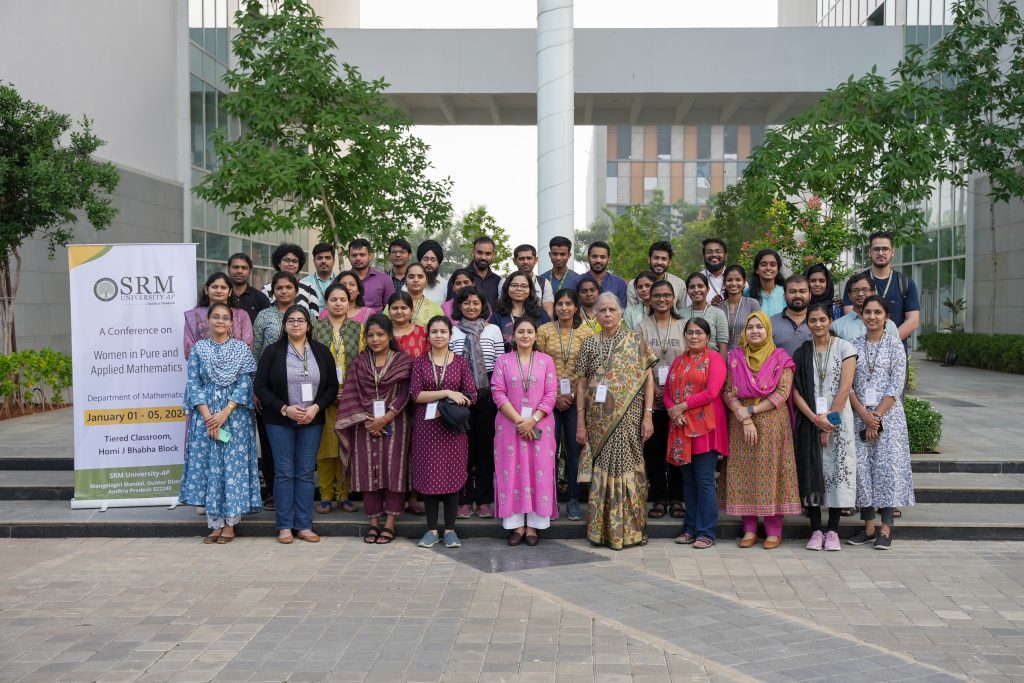
The Department of Mathematics had organised an International Conference on Women in Pure and Applied Mathematics (WPAM). The five-day-long conference featured luminaries in the field of Mathematics and was funded by three prominent Indian government research bodies: SERB, NBHM, and CSIR.
The event saw Prof. Raman Parimala, a renowned Indian Mathematician, acclaimed for her contributions to the field of Algebra. The Conference was held with the purpose of providing an empathetic platform for women mathematicians to present their cutting-edge research work and to share their concerns about the gender gap in mathematical science.
Prof. Sanoli Gun (President of Asian Oceanian Women in Mathematics), Prof. Vijaylaxmi Trivedi (Chairperson, Indian Women in Mathematics), and Prof. Anisa Chorwadwala (Member, Indian Women in Mathematics) motivated the students and provided the students with valuable inputs on how to pursue their career further in Mathematics. The luminaries also discussed activities conducted by their organisations to encourage established women researchers, women PhD scholars and advanced undergraduate-level women students in Mathematics.
During the conference, activities such as poster presentations were held to facilitate mathematical interaction between students. The conference ended with the hope that there will be more opportunities to organise similar events.
- Published in Departmental News, Math News, News
From Vision to Reality: Assessing the Feasibility of One Nation, One Election in India
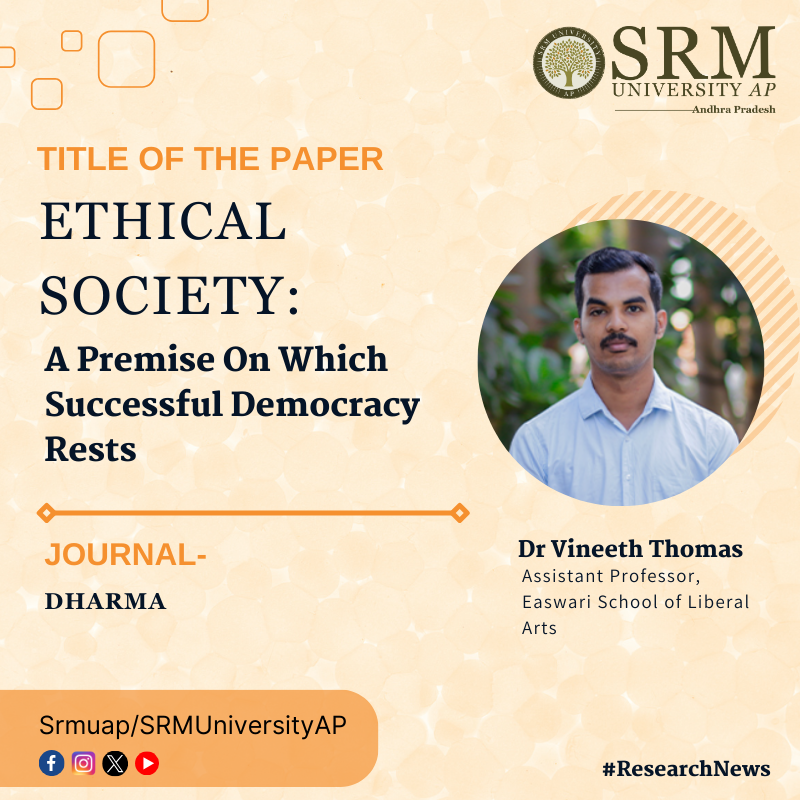
In the grand spectacle of democracy, every ballot cast represents a pivotal moment in shaping the collective destiny of a nation. However, what happens when the destiny of 1.4 billion people lacks a solid foundation of values and ethics?
Dr Vineeth Thomas, Assistant Professor at the Department of Liberal Arts, in his research paper titled “Ethical Society: A Premise On Which Successful Democracy Rests”, delves into these complexities of democratic regression that threaten to shake the foundations of our political system.
ABSTRACT:
Samuel Phillips Huntington’s thesis on the ‘Third Wave’ of democratisation, as presented in his seminal work “The Third Wave: Democratization in the Late Twentieth Century”, posited democracy as the preeminent and widely accepted form of governance. While democracy may prevail quantitatively in contemporary times, it grapples with numerous challenges in terms of its qualitative aspects. This research article identifies the absence or dearth of ethical values as a significant factor contributing to the erosion of democracies worldwide. Moreover, this erosion has the potential to incite a ‘new wave against democracy’. Consequently, this article aims to explore the potential remedy for this issue by anchoring democracy in an ethically conscious society. We contend that an ethically grounded society serves as a fundamental prerequisite for nurturing a high-quality and prosperous democracy, ultimately acting as a formidable barrier against the imminent and looming threats to democratic systems.
The link to the article
- Published in Departmental News, Liberal Arts News, News, Research News


